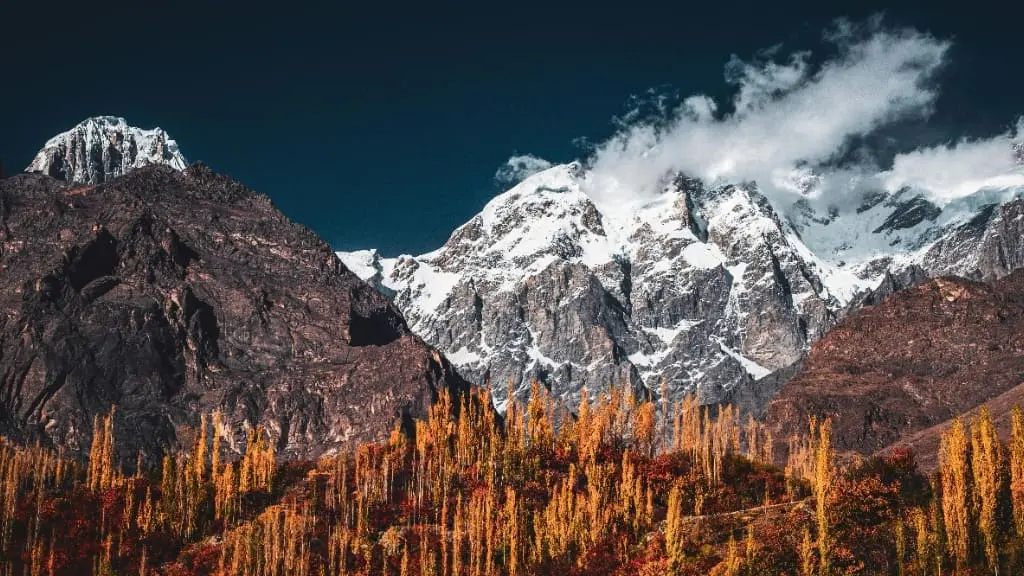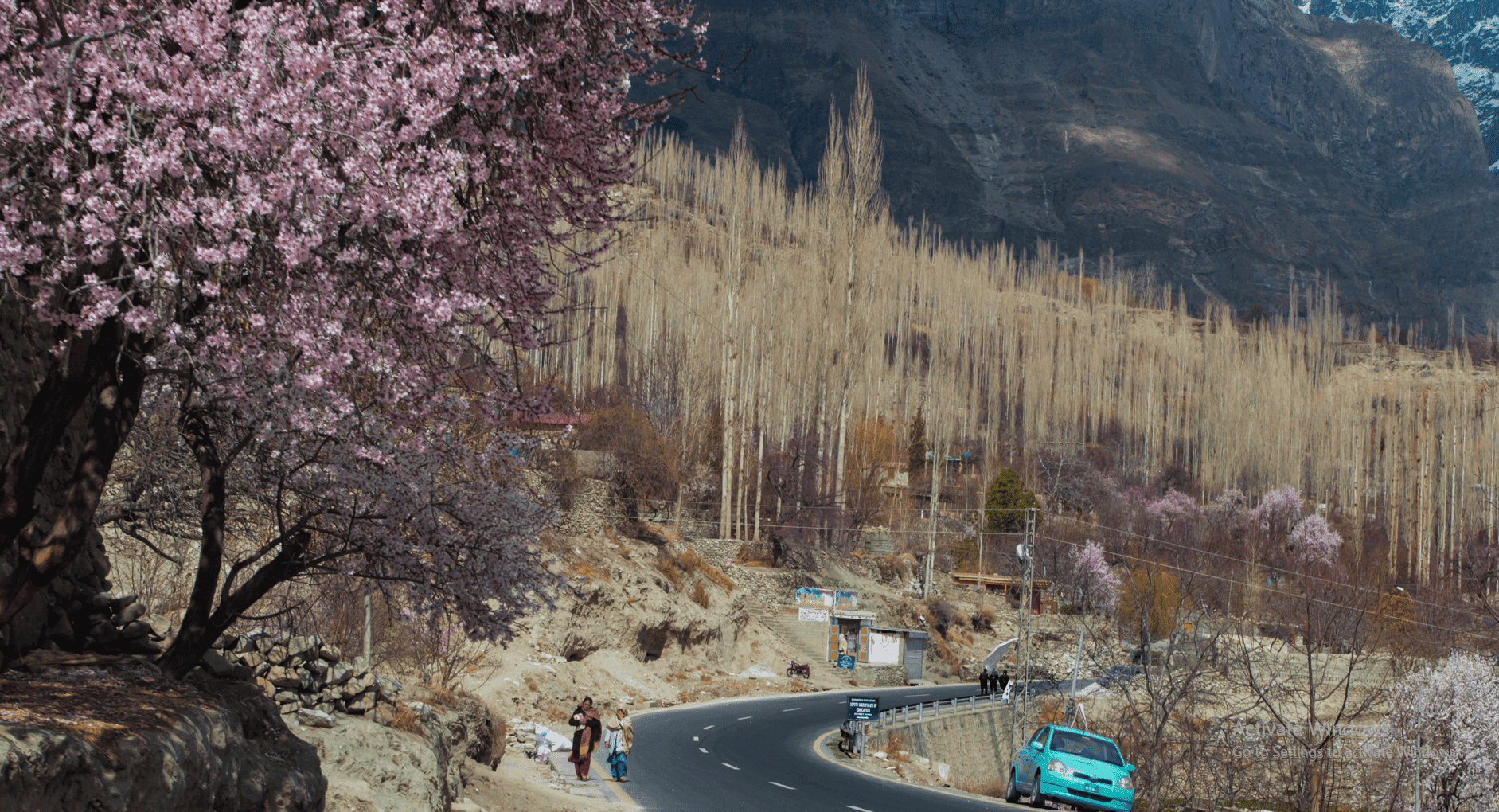 Photo by Wasif Mehmood on Pexels.com
Photo by Wasif Mehmood on Pexels.com
For most travellers, the best time to visit Hunza is late April to early October — spring (with blossoms) and summer (clear trekking weather) are ideal; autumn (September to October) is fantastic for colours and photography. Winters are very cold and best for snow-season experiences only.
Why this matters — quick facts
If you need the best time to visit Hunza for clear mountain views, open treks, cherry/apricot blossoms, or fall colours, the months you pick determine road access, accommodation availability, temperature ranges and festival experiences. This guide provides the exact months, outlines what to expect day-to-day, suggests what to pack, and offers three plug-and-play itineraries, allowing you to plan quickly and confidently.
💡 Tip: If you want perfect photography (clear skies + blossoms), aim for the last week of March → the second week of April (higher villages bloom slightly later).
At-a-glance seasons & the short answer
Spring (Mar–May): Blossoms, mellow weather, low crowds early spring → excellent for photography and culture. Peak blossoms: late March–mid April in lower Hunza; higher villages bloom a week or two later.
Summer (Jun–Aug): Warm days, ideal trekking and road travel (Karakoram Highway fully passable most years). Peak tourist season.
Autumn (Sept–Oct): Golden poplars, clearer skies, photo-perfect landscapes, harvest festivals (Ginani). A top choice for photography & culture.
Winter (Nov–Feb): Very cold (can drop well below freezing). Best for winter sports or solitude — expect lots of road closures.
Month-by-month: Time to visit Hunza
March — April: Spring blossom window
Lower Hunza (Karimabad, Altit/ Baltit area): blossoms late March → early April. Great for festival events and pale-morning light. Plan for daytime temps 8–18°C.
May — June: Green, stable weather
Trees leaf out, mountain trails become accessible. Daytime temps are comfortable (15–25°C). Best for longer treks (Rakaposhi views, Hopper).
July — August: Peak summer
Warmest months; occasional rain in July. Great for high-altitude treks and side valleys. Book accommodation early.
September — October: Autumn colours & harvest
Golden poplars and clear skies; Ginani/harvest events around late June–September, depending on area — late September into October is visually spectacular.
November — February: Low season (winter)
Snowy, dramatic landscapes — but short daylight, limited services, and possible road closures. Consider only if you’re prepared for cold-weather logistics.
⚠️ Warning: Weather can change fast in the Karakoram — always check local road reports and the Gilgit office for permits/closures before driving.
Cherry & apricot blossom + festival calendar
 Hunza valley bloosom in summer season.
Hunza valley bloosom in summer season.
Late March → Mid April: Cherry/apricot blossom season (lower to mid-elevation; Karimabad & Attabad views). Best photo windows: sunrise/sunset.
June 21 (approx): Ginani — harvest celebration (local dates vary; often tied to the solstice).
July (varies): Local apricot festivals (Gulmit has held late-July events).
Winter (Jan): Some winter sports events and small winter festivals near Attabad/ Qaqlasht (dates vary).
How to plan — step-by-step (book, routes, timing)
Choose your season (see month-by-month) based on whether you want blossoms, trekking, or colours.
Check travel advisories & permits: Register with local authorities on arrival; verify permit situation if you plan remote treks (regulations can change).
Decide route: Drive via Karakoram Highway (common) or fly to Gilgit (weather dependent). Book driver/vehicle or internal flights early in peak season.
Book accommodation in Karimabad (central) or Gulmit (upper Hunza), depending on activities. Peak season fills quickly.
Local logistics: Hire local guides for treks and reserve transport for lakes/side valleys. Pack for big temperature swings.
Backup day: Always add one buffer day for road/weather delays.
💡 Tip: Voice-search friendly question to rank for: “When is Hunza cherry blossom season?” — answer succinctly in page schema and intro (“late March–mid April”).
3 shareable itineraries (copy-paste friendly)
3-day (weekend) — Best for a quick photo trip (spring/autumn)
Day 1: Drive/flight to Gilgit → Karimabad (sunset viewpoint).
Day 2: Baltit & Altit Fort, Royal Garden, Duikar viewpoint, Attabad Lake sunset.
Day 3: Short hike to Hopper or Borith Lake → return.
5-day (balanced) — Best for first-timers (May–Sept)
Day 1: Arrive Gilgit → Karimabad.
Day 2: Karimabad walking tour + Baltit/Altit.
Day 3: Day trip to Attabad Lake + Gulmit & Passu cones.
Day 4: Hopper Valley or Nagar exploration, local village visit.
Day 5: Return to Gilgit / onward travel.
10-day (deep dive) — Best for trekkers & culture lovers
Days 1–3: Karimabad + cultural immersion (local food, forts).
Days 4–6: Trek to Ultar viewpoint / Rakaposhi Base + homestay.
Days 7–9: Gojal (Passu, Borith Lake, Hussaini suspension bridge).
Day 10: Return/buffer day.
What to pack — season-specific checklist
Spring / Autumn: Layering base + fleece, light down jacket, sturdy hiking shoes, sun hat, sunglasses, quick-dry clothing.
Summer: Light layers for day, warm layer for nights, rain jacket (July).
Winter: Heavy insulated jacket, thermal layers, snow boots, crampons for high passes (if trekking).
Always: Sunscreen, water purification tablets, a small first-aid kit, local SIM/Power bank.
Safety, permits & local rules — what to check
Safety: Hunza is widely reported as one of Pakistan’s safest travel spots — locals are friendly and tourism infrastructure is robust. Still, check the latest travel advisories before you go.
Permits & registration: The Directorate of Tourist Services (Gilgit-Baltistan) requires registration and issues permits for some restricted or expedition areas — keep records of any permits and ID. Regulations have changed recently; check before departure.
Road closures: Karakoram Highway conditions change with weather and maintenance; add buffer days.
⚠️ Warning (single challenge): Permit/trekking fee policy has been unsettled recently, and some expedition permits were suspended or delayed in 2025. If you rely on long treks or climbing, confirm permits with operators and the GB tourism office before booking non-refundable plans.
Unique local insights
Micro-season shifts: Upper-Hunza (Passu/Gulmit) blooms later than Karimabad — plan +7–10 days if you target higher villages.
Sunrise timing for photos: Best morning light often hits Rakaposhi between 05:30–07:00 in April/Sept — check local sunrise times.
Hidden viewpoint: Duikar (for Karimabad sunsets) — arrive before golden hour and walk 10–20 minutes uphill for unobstructed peaks. (Local guide tip.)
FAQ
1. What is the best time to visit Hunza?
Late April → early October for most travellers. For blossoms: late March → mid April; for autumn colours: Sept–Oct.
2. Is Hunza safe to travel to?
Generally, yes; Hunza is frequently described as peaceful and tourist-friendly, but check travel advisories and register with local authorities.
3. Do foreigners need an NOC to visit Hunza?
Most tourist routes do not require a separate NOC at present, but expedition permits can be required for high passes — verify with operators and the GB tourism office.
4. When is the cherry/apricot blossom season?
Peak blossom is usually late March → first half of April in lower Hunza; later at higher altitudes.
5. How many days should I spend in Hunza?
Minimum 3 days for highlights; 5–7 for a relaxed trip; 10+ for trekking + off-beat valleys.
6. How do I get to Hunza?
Drive along the Karakoram Highway (common) or fly to Gilgit (weather dependent). Book local transport in advance in peak season.
7. What clothes should I pack?
Bring layers; nights are cold year-round. See packing checklist above.
8. Are there good hotels/restaurants?
Yes, in Karimabad and Gulmit, ranges from guesthouses to mid-range hotels. Book early in peak months.
9. Will my phone work?
Mobile coverage exists in main towns; expect weak/absent signal in remote valleys. Local SIMs are recommended.
10. Can I drive myself?
Experienced drivers can, but hiring local drivers familiar with mountain roads is safer and common.
11. Best place for sunrise photos?
Duikar and Baltit viewpoints. Arrive early for clean light and fewer crowds.
12. Are guides necessary?
For simple sightseeing no; for treks and off-road areas, yes — hire a registered local guide.
13. Is there an entry fee for Altit/Baltit Fort?
Yes — small entry fee supports conservation; rates differ for locals and foreigners.
14. When is peak tourist season?
May–August; September is shoulder season with great weather and colours.
15. Any health precautions?
Bring altitude-aware meds if trekking; keep hydrated; carry a basic first-aid kit.
16. Can I combine Hunza + Skardu in one trip?
Yes — many routes combine Gilgit → Hunza → Skardu; allow at least 10–14 days for a comfortable combined itinerary.
Conclusion
For most visitors, the best time to visit Hunza is late April–early October, with blossom magic in late March–April and golden colours in Sept–Oct. Book early for peak months, check permits/registration with the GB authorities, and add buffer days for weather.
